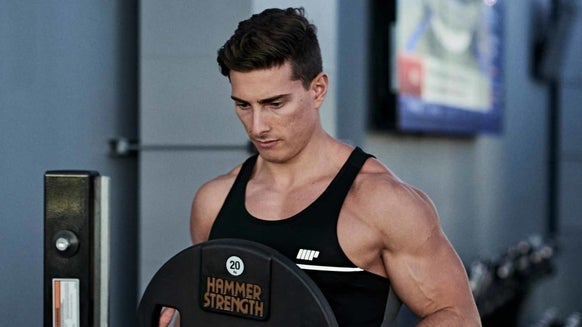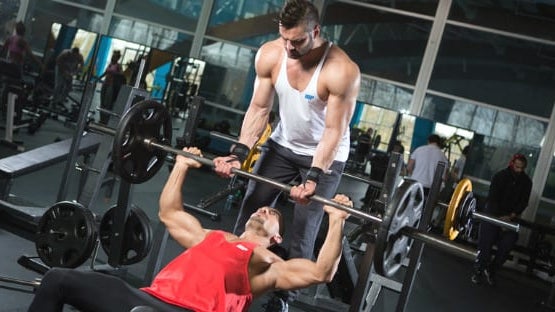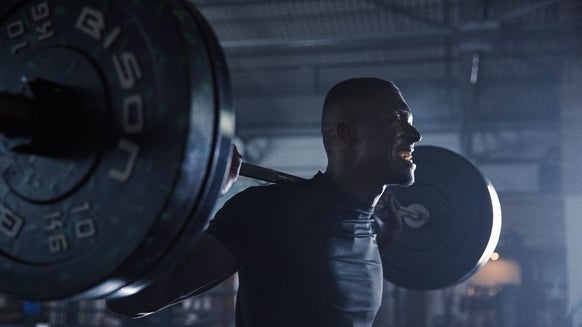 We’re all guilty of slouching at some point, so what’s the big deal right? Well not correcting your slouch could mean that over time, it will take a serious toll on your spine, shoulders, hips, and knees. This can cause a cascade of structural flaws that lead to back and joint pain, reduced flexibility, and compromised muscles, all of which will limit your ability to burn fat and build strength. Yep.. say goodbye to your gains!Don’t fear though we’ve got you covered with these exercises that can help you head off all these problems, fix your form, reduce pain, and get you moving again.
We’re all guilty of slouching at some point, so what’s the big deal right? Well not correcting your slouch could mean that over time, it will take a serious toll on your spine, shoulders, hips, and knees. This can cause a cascade of structural flaws that lead to back and joint pain, reduced flexibility, and compromised muscles, all of which will limit your ability to burn fat and build strength. Yep.. say goodbye to your gains!Don’t fear though we’ve got you covered with these exercises that can help you head off all these problems, fix your form, reduce pain, and get you moving again. Why is Posture Important?
The human body is incredible and we have evolved to be as efficient as possible, from movement through to the way our internal organs do their jobs. When We have poor posture it changes the alignment of our bones, muscles and connective tissue, which then means our movements are not as efficient as they could be.When we don't move efficiently it can lead to stress being placed through muscles and this can lead to some muscles becoming weakened while opposing muscles will feel very tight, which increases your risk of serious injury. Posture can also affect internal organs within your rib cage, which can then lead to restricted breathing and digestion – for example being slouched in a chair it will make it much harder to take a deep breath than if you were stood up straight.Your body is built to adapt and if you keep your joints in the same position all day, your body adapts to this new position and causes significant postural change. Injuries can affect posture, particularly if placed in a cast from a break for a few weeks, however spending extended periods of time in any position, can cause postural changes. For this reason, a lot of office workers are particularly susceptible to poor posture however, a mixture of stretches and strengthening exercises can often help to correct a poor posture.Exercises to Improve Posture
1. Stretches for Rounded Shoulders
What causes rounded shoulders?Being sat at a desk with your arms forward (typing/writing), or too many ‘pushing’ exercises and not enough ‘pulling’ exercises. These both lead to tight chest muscles, and weak upper back muscles, which causes your shoulders to hunch forward (internally rotate).
How to diagnose rounded shoulders
The Pencil TestHolding a pencil in each hand, stand up straight and let your arms hang naturally by your sides. In a good posture, the pencils should be pointing directly forward, however with rounded shoulders, the pencils will be turned towards each other.ExercisesAim to strengthen the upper back, do exercises that engage your rhomboids, mid to lower-trapezius and rotator cuff muscle group. Exercises could include a seated row, reverse flyes, and external shoulder rotations on a cable machine.StretchesRounded shoulders are linked with tight chest muscles, so this should be the focus of your stretches. Some examplestretches are included below.
- Link your hands together behind your back, and slowly raise your arms until you feel a slight stretch across your chest.
- To stretch your right and left pec major muscles separately, stand near a wall, and extend your arm. The wall should be behind you and your palm should be facing the wall, as shown above. As you gently turn your body away from your hand, you should feel a stretch in your pectoralis major.
- To target the pec minor, find a corner of a room or doorway, and make right angles with your elbows. Your elbows should be around shoulder height., Next, gently tilt your upper body downwards until you feel a stretch across your pec minor, which is near your armpit.
2. Stretches for a Forward Head
What causes a forward head?A forward head is often accompanied by round shoulders too, and it comes from spending a lot of time leaning your head forward, such as leaning towards a screen. It is rapidly becoming known as ‘text neck’ as more and more people are developing this from looking down at phones hundreds of times throughout the day.Holding your phone higher can help, as can raising your computer screen to eye-level.How to diagnose forward head
Ideally, from a side-on view, the middle of the shoulder should be in line with the middle of the ear. This can be examined through a photo as shown above, with the image on the left being normal posture, and the one on the right showing signs of a forward head.Exercises- You should perform similar exercises to those for round shoulders, to try and strengthen the rhomboids and trapezius. These include pulling movements such as rows.
- Ensure you keep your head up and a flat back throughout the movements to strengthen key postural muscles.
StretchesYou can loosen your chest using the previous stretches. Alternatively, as shown above, you can use a foam roller. Position the foam roller up the length of your spine and gently let your arms rest outwards.- To target your scalene, place one arm behind your back, and then gently tilt your head in the opposite direction. Slowly roll your head back until a stretch is felt.
- The stretch for your sternocleidomastoid is similar. To stretch the left-hand side, tilt your head to bring your right ear closer to your shoulder, and then gently rotate your head to the left so you end up looking upwards. These two stretches should be done while seated, to avoid tilting your whole body while stretching.
All of these stretches should be held for 20-30 seconds and repeat for each side. These can be done at your desk throughout the day.
3. Anterior Pelvic Tilt
What causes an anterior pelvic tilt?Spending a lot of time sitting down over time can cause your hip flexors at the front of your hip to shorten, and your hip extensors (at the back) to weaken. The result of this is that your hips naturally rotate forward slightly when standing, accentuating the curve in your lower back, and making your backside and stomach stick out. Anterior pelvic tilt is also commonly seen in cyclists as a lot of their training is done with their hip in a flexed position.How to diagnose anterior pelvic tilt Stand with your back to a wall, and look at the space between the wall and your lower back. It is normal for a slight gap (enough to fit your hand through) as your lower back natural curves, as shown in the left photo, however anterior pelvic tilt can lead to an excessive lumbar curve in the spine, and the space between spine and the wall will be greater as shown in the photo on the right.ExercisesTypically the weak muscles in the anterior pelvic tilt will be the hamstrings and glutes.To strengthen these muscles, exercises should include hamstring curls, deadlifts, kickbacks and hip thrusters.StretchesTo stretch off the hip flexors, take a lunge position with the back knee resting on the floor, and ankle, knee and hip joints all at right angles. From this position, gently try to rotate your hips upwards, and a stretch should be felt in your quad in your back leg.An alternate quad stretch is to lie on your side and use your hand to pull one foot back, keeping your knees in line. From this position, gently push your hips forward, until a quad stretch is felt in your bent leg. Both of these stretches should be held for 20-30 seconds and repeat on both sides. Finally, stretching the hip adductors may also help, so sit on the floor and place the soles of your feet together. Using your hands, pull your feet closer to your body, and use your elbows to slowly push your knees outwards. The stretch should be felt in your groin area and held for 20 seconds.4. Tight Calves
What causes tight calvesWearing high heels regularly can cause your calf muscles to get shorter, as they will adapt to always being in a shortened position. Wearing heels has the same effect as walking on your toes all day, and consequently, I’ve seen workers who find it more comfortable to walk in heels than in flats.How to diagnose tight calvesSit on a chair, and lift your legs out straight in front of you, and pull your toes back towards as far as they can go. Ideally, your toes should point 10-20 degrees beyond a right angle (left photo), however, with tight calves, a person may struggle to even reach a right angle.Exercises The muscle opposes the calf muscles in the tibialis anterior, so a strengthening exercise may include lying down, attaching a resistance band to the foot, and pulling your toes up towards you, however, if you’re pushed for time, I’ve found calf stretches to be more effective.StretchesRoll the length of your calf up and down a foam roller. If there are any particularly tender places, then keep the foam roller in that position for a few seconds until the pain subsides. To target different angles, you can rotate your leg as you use the roller. Your calf muscles include the gastrocnemius and soleus muscles, and each has a slightly different technique to stretch them. For the gastrocnemius, press against a wall and keep your back knee straight, and push your back heel into the floor. To get a stronger stretch, move your back leg further away from the wall. For the soleus, keep a similar position, however, bend your back knee and then push your heel into the floor. The stretch should be felt in the back leg, but slightly lower than the gastrocnemius stretch. Hold stretches for 20-30 seconds and repeat for both sides.Conclusion
If you are worried about any of these postural issues discussed in this article, it is often possible to identify to see them either in the mirror or by getting someone to take a photo of you from an angle that you can’t see. It is important that you adopt your natural posture during diagnosis, and don’t just put on the perfect posture for 20 seconds and then go back to normal.Have a go at the stretches and exercises as prescribed, and if you are still concerned, a personal trainer or physiotherapist will be able to give you a thorough postural examination to investigate. To help stop bad posture from developing, don’t spend too long sitting in one position, and get up and walk up and down the hall throughout the day.Every hour remind yourself what good posture is, and make sure you’re in a good position rather than slouching, or hanging your head too far forward.Take Home Message
Remember it’s important to work on poor posture to help eliminate the risk of movement becoming less efficient, which can increase your risk of injury and lead to serious long-term health consequences.Make sure to keep mobile throughout the day as poor posture often arises from keeping your joints in the same position for extended periods of time, so sedentary jobs, in particular, can lead to more postural problems, so it’s important to do extra work but don’t fear because poor posture can often be corrected by stretching tight muscles, and strengthening weak opposing muscles.When working on your posture it's important to perform proper form during exercises to help strengthen postural muscles and frequent stretching can help reduce the negative effects of tight muscles. You can always use mirrors or photos to examine your posture, and if you are concerned go and see a physiotherapist or personal trainer.Our articles should be used for informational and educational purposes only and are not intended to be taken as medical advice. If you're concerned, consult a health professional before taking dietary supplements or introducing any major changes to your diet. Amy has a BSHons in psychology where she was a sports scholar, as a sportswoman for over 18 years playing rugby and netball up to a national level.
She is a level 3 qualified personal trainer with a diploma in sports and exercise nutrition. She has been training in a gym and weightlifting for over 13 years, participating in CrossFit, Bodybuilding and many other events such as hyrox, triathlons and marathons.
She has a passion for extending her learning through latest studies and with a great passion for getting more women into fitness.
Amy has created programs as a coach for the last 4 years as well as around sport and fitness for Red Bull, Hyrox, Spartan UK, as well as Mental Movement UK around how fitness can help improve your mental health.
She is also a advocate for female confidence and being awareness to mental health and body confidence. She can be found here – https://www.instagram.com/dreams_and_dumbbells/?hl=en

















